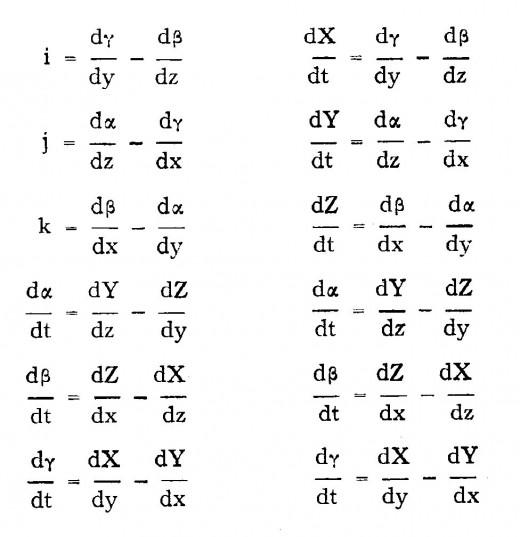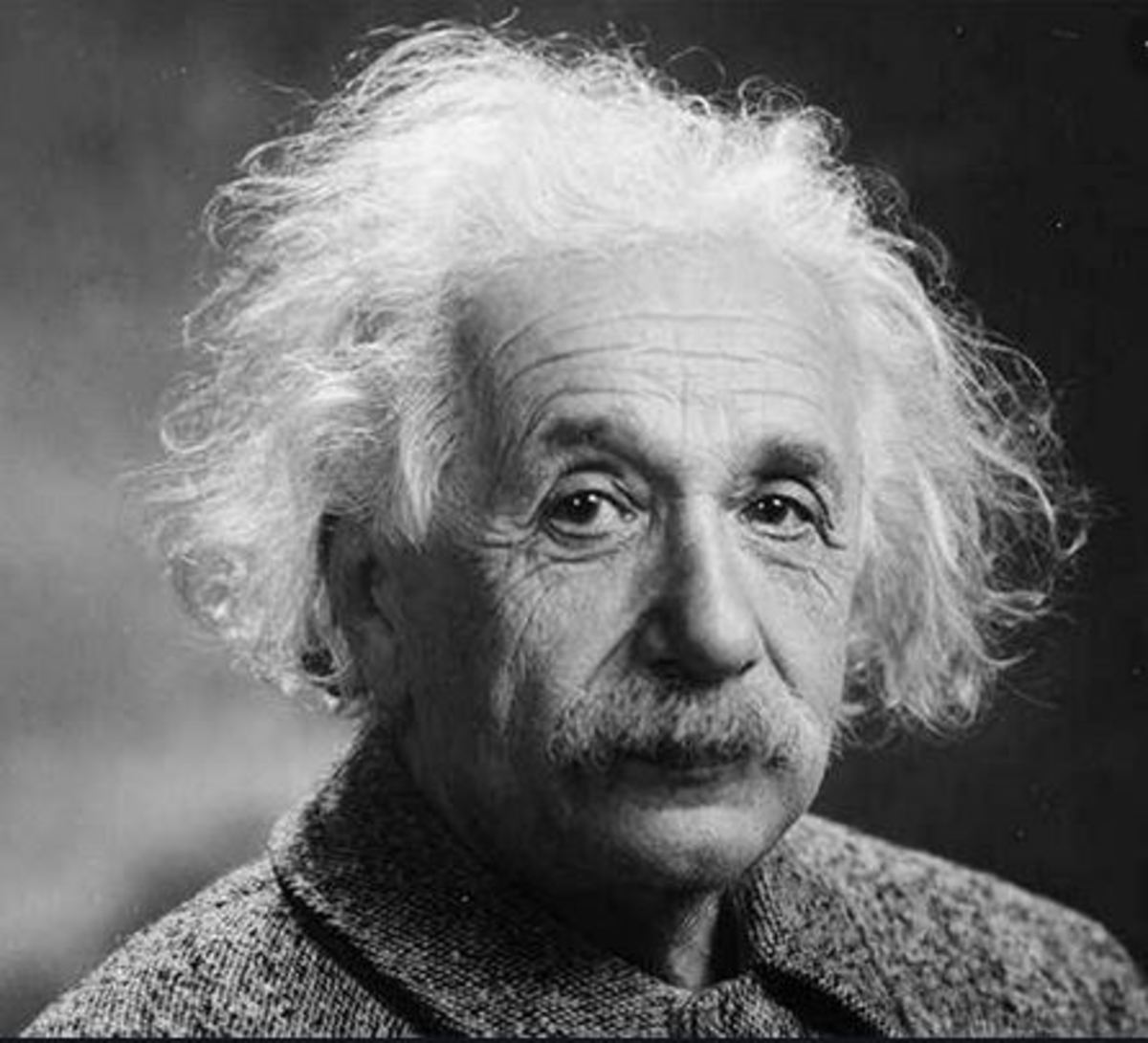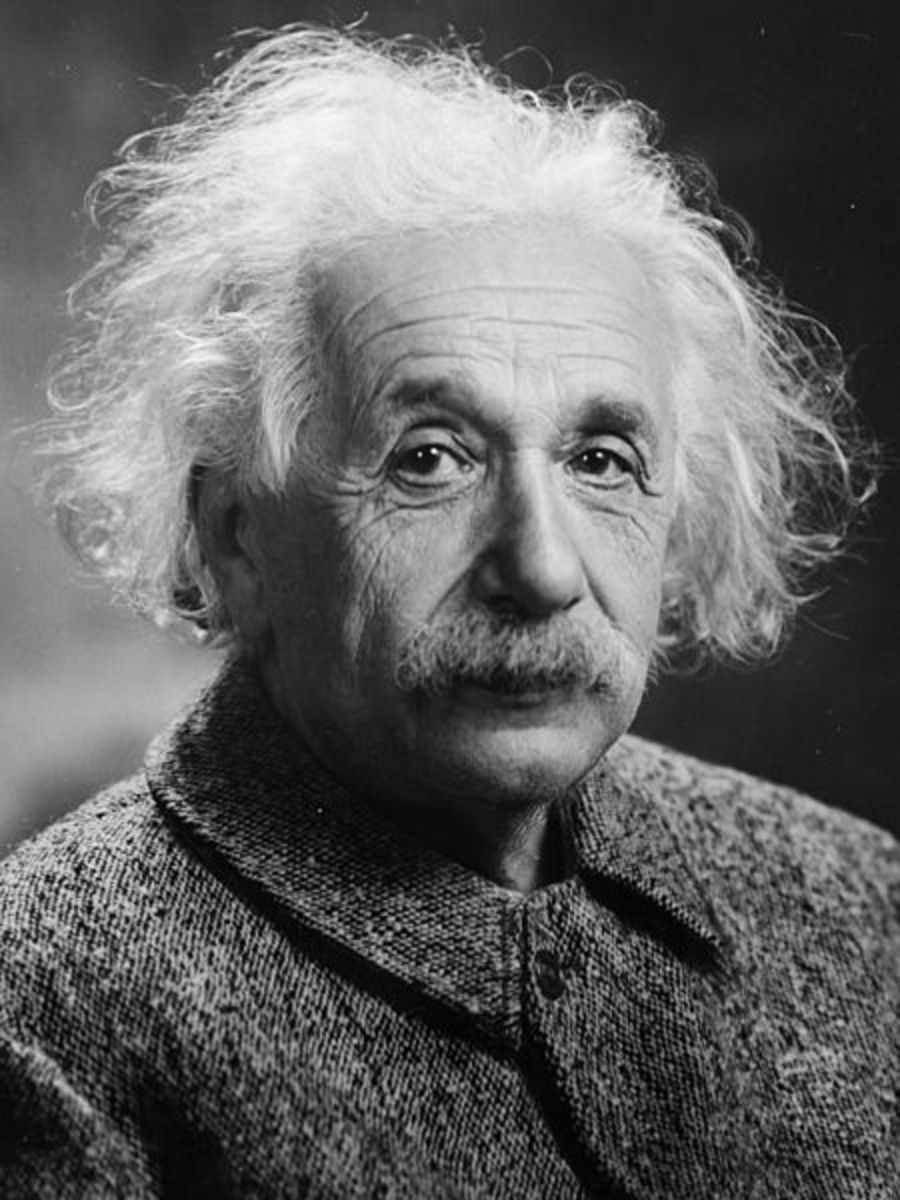How To Gain Knowledge of the Existence of the Unknowable
Derived from his formula Maxwell predicted that electromagnetic waves could be propagated thru space

Knowledge of the unobservable
“We can’t have positive knowledge of the existence of the unknowable.”
What do we make out of this statement?
This is a statement made by Andrei Kolmogorov. It is found in “The Man Who Invented Modern Probability, Mathematics: Chance encounters in the life of Andrei Kolmogorov” by Slava Gerovitch (Nautilus. Internet. Aug. 25,2013)
Gerovitch concludes her piece, thus:
"For Kolmogorov, his ideas neither eliminated chance, nor affirmed a fundamental uncertainty about our world; they simply provided a rigorous language to talk about what cannot be known for certain. The notion of 'absolute randomness' made no more sense than 'absolute determinism,' he once remarked, concluding, “We can’t have positive knowledge of the existence of the unknowable.” Thanks to Kolmogorov, though, we can explain when and why we don’t."
Kolmogorov was involved in the theory of statistics. However, this statement is not purely about statistics but partly impinging on philosophy of science.
The keywords are “can’t” “positive knowledge.” “existence,” and “unknowable.”
Let us trim away the contraction or unnecessary word.
“Can’t” is equivalent to “cannot.” "Positive knowledge" will be just "knowledge."
Knowledge is about the past; it is different from prediction. Language has a way of accounting for the present. But once we deal with the present, reality fleets into the past.
It is like a person who is comprised of trillions of cells. Except cells of the brain, nerve and cardiovascular system, cells replace themselves periodically. Blood cells replace themselves every 140 days. However, if you were baptized John. you will be called John even when your cells had changed several times.
A prediction is about the future but once the prediction is verified true, it becomes knowledge.
There should be a way of divesting language. If that were done, we come to bare fact.
A fact is anything about the universe that is undefined, Bertrand Russell said (Russell, B. Human Knowledge: Its Scope and Limits. 1947). Once we apply a symbol or language on the universe we begin to define it. Russell was a British philosopher and mathematician, winner of Nobel Prize in literature.
“Existence” is attributed to a definite description, according to Russell. I will not give a detailed explanation of this topic here. Suffice it to say that if you attribute existence to a name or label, you will arrive at a contradiction in its logical analysis. This was shown by Russell.
For example, “The supreme commander of the allied forces of world war II exists.”
The definite descriptions is “The supreme commander of the allied forces of world war II.”
When we try to verify this definite description, we find that it is Dwight Eisenhower.
Now we go to “unknowable”
It could mean “a definite description upon which existence cannot be attributed.” In other words, it is a definite description that has no verifier.
Or it could mean a definite description that has no evidence in its favor or against it in the past or in the future. This belongs in the law of excluded middle.
Or it could mean something that cannot be measured. Or something that if we tried to measure, its nature changes.
This is along Heisenberg’s principle of uncertainty. For example, an electron that is very small but has mass. Therefore it is an entity, it is real, in common language. But if we try to see it by applying light, its nature changes so that what we see is not the real electron.
Take another example, an atom of uranium, a radioactive material. How to study it?
Before the advent of the electron microscope, atoms were studied with the use of Wilson’s cloud chamber or Zara’s cloud chamber. This is like a juice maker with a bottom and glass top. It is a vacuum. At the bottom is a container for alcohol such that alcohol evaporates to the chamber. The vapor clings to the glass top. Also at the bottom is a small chunk of uranium. As uranium decays, the atoms split. How do we know? The splitting atoms touch the top glass and leave clear lines on the layer of evaporated alcohol. The lines are paths of splitting atoms. That is, the atoms are inferred from their paths. They are never seen. Ernest Rutherford made a model of the atom with this method.
(Gregorio Y. Zara was a Filipino national scientist who earned his doctorate degree in nuclear physics in Sorbonne University, France. He was a contemporary of Marie Curie)
The electron microscope uses films to record clouds of electrons. And electrons are not inferred as individuals, they are computed from their paths seen in the film.
Unknowable can mean unobservable by naked eye. Or something inferred from observation. Or something out of pure reasoning.
Pure reason
Kant has terms like “a priori” and “a posteriori.” “A priori” means pure reason; “a posteriori” means by way of observation or experience.
Einstein made use of something that he did not observe or did not infer from observable things but proved it by deduction.
The Lorentz transformation says that: the laws of nature in one coordinate system are the same as the laws of nature in another coordinate system.
A galaxy is one coordinate system, like the Milky Way.
How did Einstein use the Lorentz transformation? He used it as one of his assumptions in coming up with his special theory of relativity and generalized theory of relativity. The other assumption he is used was the speed of light that was measured by experiment conducted by Michelson and Morley.
What is the nature of Lorentz transformation? It is pure reason, that can be couched in mathematical formula as was done by Hendrik Antoon Lorentz.
At the time when Einstein used Lorentz transformation, it was not known whether it is true or not. An assumption in science does not need to be proven. (It does not mean that all assumptions are unknown in making a hypothesis or formulation of a theory. But this is another story. At least one of them should be known like the speed of light).
Besides, there was no way to prove Lorentz transformation. No spacecraft was capable of traveling to another galaxy to observe nature there. Even today, that is why the transformation has never been proven by way of observation.
How do we know that Lorentz transformation is true?
The special theory of relativity was couched in mathematical language. It was published in 1905. Only Max Planck could understand it. To make his theory understandable by non-mathematicians, Einstein derived a statement of fact from it. This statement is in the form of a formula: E = mc2. This shows a tremendous amount of energy that transforms from matter.
This formula was subsequently verified by Enrico Fermi in 1936 and by Lise Mietner, von Frisch and company in 1938. It was used in making the atomic bombs dropped over Japan in 1945.
The bombs definitely proved to the world that the formula is true. Since the formula is true, the theory from which it is derived is true. Therefore, the assumptions of the theory are true: one of them is Lorentz transformation.
[We have terms like “hypothesis” and “theory.” Hypothesis is a scientific guess used in conducting experiments. It consists of concepts and relationship(s) among concepts, according to Einstein. Once the hypothesis is verified, it graduates into a theory. We have been using “theory” in the above discussion loosely because hypothesis and theory are not usually distinguished from each other.]
That is, one hitherto unknown was proven; Lorentz transformation is considered as knowledge. It belongs in pure reason.
Einstein differed from Lorentz with respect to the context of the Lorentz transformation though. Lorentz believed in the existence of ether that carried light. Einstein did not factor in ether, perhaps deriving his idea from the work of Faraday that electromagnetic waves could be propagated through space without a medium.
Pioneer
Einstein had been anticipated in the use of his method by Clerck Maxwell. Maxwell used Faraday's laws of electricity. Faraday discovered that electricity can be induced by the rotation of wire around a magnet. He made the first dynamo. Maxwell converted Farday's laws into mathematical formula. Maxwell made his own formula. He substituted some of his formula into the formula derived from Faraday's laws (Campbell, N. What is Science? 1921). Out of the combination he visualized something new. He predicted that electromagnetism can be induced in one place and reproduced in another place through space. However, he did not have the device to test his prediction.
Eight years later Heinrich Hertz came up with his coherer that could test Maxwell's prediction. He verified that Maxwell;s prediction was true. Guglielmo Marconi took over Hertz. He improved upon the coherer. He discovered ways how to propagate electromagnetic waves through longer distances. The farthest he could make his waves travel was across the Atlantic ocean. Marconi invented the radio, radar, cellphone, and telegram transmitter. This was responsible for saving passengers of ship that sank at sea. It saved almost half of the passengers of the Titanic (Goldsmith, D. Guglielmo Marconi. 2003).
However, the method of Maxwell in coming up with his formula has not yet been well explained. Einstein's procedure is clearer although his mathematics are much more involved that only Max Planck, a mathematician, could understand it when the special theory of relativity was published in 1905. Einstein issued a supplement in 1906, a prediction derived from his mathematical formulation: E = mc2.
Paul Dirac used Einstein's method with some modifications and came up with a prediction of the existence of a particle aside from the electron and proton. Following Dirac's work, with the use of cloud chamber, C.D. Anderson discovered positron. Positron is the basis of PET, positron emission tomography, a medical protocol used like X-ray, but better.
Dirac explained his method in his lecture during his acceptance of Nobel Prize in physics on December 12,1933.
Opposite
It appears now that we must modify the meaning of “unknowable” as used by Kolmogorov.
“Unknowable” means unobservable. However, it can be given a definite description. We can gain access to it by some means like deduction. Definite descriptions make up a concept. That is what Kolmogorov means by “rigorous language.” A concept couched in rigorous language is amenable to verification or to mathematical formula.
Upon review of our journey in discovery, we find that we have come to a conclusion opposite that of the first statement quoted above. That is, we can have knowledge of a fact in the universe so defined. Our knowledge can either be out of pure reason or out of experience.
Certainty has two interpretations. Certainty in mathematics is one kind. Certainty in science is another. Certainty in mathematics is logical and tautological. Certainty in science is empirical.
The test of mathematics is validity. The test of science is truth, according to Russell. We are using the correspondence theory of truth; not pragmatism, or idealism , or monism. But that is another story.
Certainty can be contrived for some purposes. Take the geographic positioning system (GPS). It gives you two classes of accuracy, the selective availability and the military coordinates. The former is available only for use by civilians. It is at least five kilometers away from the real target. The military coordinates are accurate. The reason is that any civilian or terrorist who does not know the military coordinates cannot directly attack by rockets a military installation or strategic positions like the White House or Pentagon.
Why Kolmogorov's belief
Kolmogorov was a statistician. Statistics deals with a known universe that is the population under study.or a very close estimate of it A characterization of the whole universe is based on samples. So the sample of a statistical study are existing to begin with; they are observable.
The subjects of Einstein's and Dirac's are unobservable and may have remained unknown. Something unknown cannot yield samples. That is why a statistician cannot formulate a statistics (knowledge) of a population that has no sample. We can talk of a population that has no member or with very few members, like dinosaurs. The fossils of dinosaur are so few that it is better to account of them all than get a sample to characterize about dinosaurs.
There is no statistics of a universe without a member. Put another way, such a universe can be given a definite description but has no verifier.
Determinate objects like planets are not subjects of statistics. Electrons are subjects of statistics, so are human populations.
This is to say that if Kolmogorov were talking of other subjects he could have said that something hitherto unknowable could become known.
Other theories
"If two statisticians were to lose each other in an infinite forest, the first thing they would do is get drunk. That way, they would walk more or less randomly, which would give them the best chance of finding each other. However, the statisticians should stay sober if they want to pick mushrooms. Stumbling around drunk and without purpose would reduce the area of exploration, and make it more likely that the seekers would return to the same spot, where the mushrooms are already gone."
This is the abstract of the statistical theory of Kolmogorov called “random walk” or “drunkard’s walk..”
Different theories of statistics confer varied certainty. Before Kolmogorov, two schools of statistics emerged. These are the Reichenbach-Mieses and the John Maynard Keynes theories. Reichenbach-Mieses advocates a large sample to enhance certainty. In contrast, the Keynes advocates a small sample. These were elaborated by Russell.
Hans Reichenbach was a philosopher and mathematician. Keynes was also an economist who originated deficit budgeting in government that is now in use.
For a whole population of 10 million people on whom you would like to know the incidence of cancer, which would confer the greater certainty? A sample of 10% or a sample of 20%? This topic deserves another Hub.








